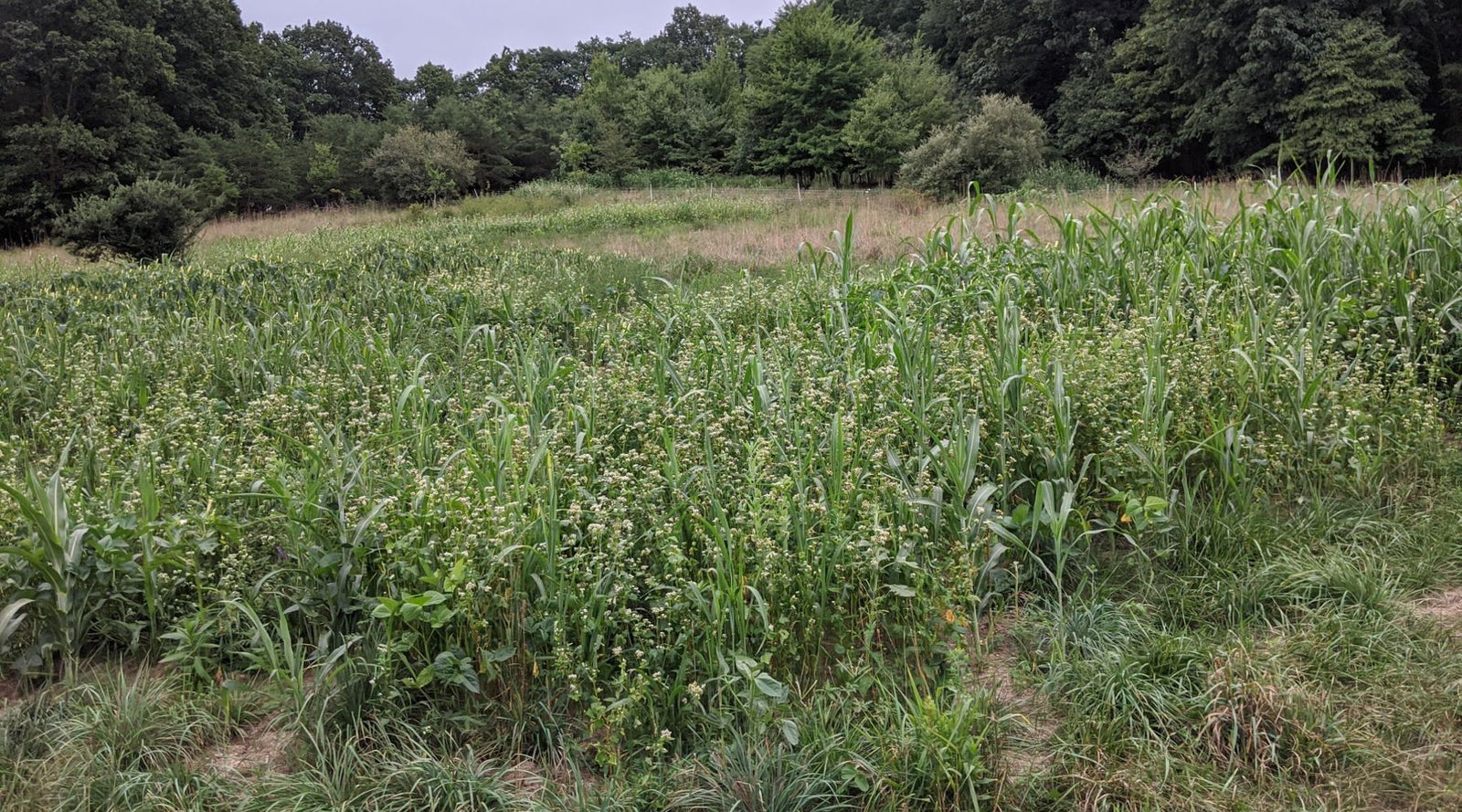Your Cart is Empty
we ship from colorado to maine

Pigs are designed to root. As pigs mature, their neck and shoulders develop into formidable power sources for the ultimate shovel in the animal kingdom: the pig snout.
Many perceive this as a problem, which it definitely can be! We've seen the destructive power of pigs left in one location too long, and it can get brutal. Confinement farmers, even organic confinement farmers, will use this as an excuse to keep pigs indoors forever, giving them no contact with the soil. If they're lucky, they'll get some bedding to play around with. Keeping animals in confinement carries with it countless issues, including dependency on routine antibiotic use, waste management, and many others including denying the animals their natural instincts. Pigs root, that’s what they do.
We've always preferred to think about our problems as potential solutions, rather than trying to force a system that won't fit into the nature of pigs and our ecosystem. This sentiment was jokingly put perfectly by a friend of ours who was responding to our concerns about hemp dogbane. Hemp dogbane is a pasture plant that lots of websites will warn you IS TOXIC to livestock. When we mentioned a need to control this plant in our pastures to our buddy Justin, his reply was, "Maybe you should just produce lots of cordage." Hemp dogbane has hemp in its name because local natives used the plant for ropes. Justin thought we would be best served to fully embrace the environment and make pasture-raised organic ropes our main product!
So when we fenced our power line fields to gain pasture and prevent the line crews from spraying our farm, we decided to use pigs to our advantage. The goals were pretty simple: eliminate woody vegetation, specifically large trees (after they were cut), and establish cover crops and perennial grasses for grazing and maintaining steep slopes.
The method we've chosen for eliminating the woody vegetation? Those powerful snouts we referenced earlier! The big trees were cut as required by the line crew, and the shoots of these trees have all been destroyed by the pigs. The soil was disturbed significantly enough that with a quick discing and one pass with a no-till drill, we’re establishing a cover crop mix in an even swath in the driest time of the year! Here’s the area after the pigs left:

Then, we ran a disc (very shallow tillage to disturb the surface of the soil), and a no-till drill to seed a cover crop mix of perennials and annuals. We’re lucky enough that our county rents out a no-till drill for $9 an acre! The benefits of a no-till drill are that they’re heavier so the seeds get placed deeper in the soil without the need for a finely-prepped seed bed. Less tillage means more soil that isn’t disturbed, and more carbon stays in the soil.

The seed mix we used is almost 20 different species of everything from clover to kale to sun hemp. The variety here, according toPractical Farmers of Iowa, “increases plant diversity and helps to support biodiversity in soil microbes and beneficial wildlife. Cover crops also help protect biodiversity off the farm by holding nutrients such as nitrogen and phosphorus in the fields, which protects water and other downstream ecosystems.” Here’s the full list of species included:

And, eventually, with a little rain and sunshine, the cover looks like:

And even later:

Look at how much forage there is, flowers for pollinators, and even more diversity for insect habitat! The sheep will graze this first in about another month, and then the pigs will come back through this winter.
It’s nice for us to see that it is possible, with proper management, to increase soil fertility and forage diversity with pigs, all while raising them in their natural habitat.
Whenever possible (and honestly it is almost always possible) our mission is to raise animals in the most humane and healthiest ways possible AND improve the soil/land they are on at the same time.
Byproduct: bacon. That’s what you call a win-win-win.
My cattle and sheep both consume hemp dogbane several times per growing season. I’ve never seen any deleterious effects from it. I don’t have tons of dogbane, but there are a few spots where it’s thick enough I worried the first few times I rotated them through. These days I really don’t sweat it when I see the plants stripped of their leaves after grazing through. I think the “toxicity” rumors about it are severely overblown judging by my experience and that of other graziers I’ve communicated with on facebook.
Comments will be approved before showing up.
Brooks Miller
September 02, 2020
Agreed, edmund! We see them grazed to the ground. The dose makes the poison: Paracelsus — ‘All things are poisons, for there is nothing without poisonous qualities. It is only the dose which makes a thing poison.’